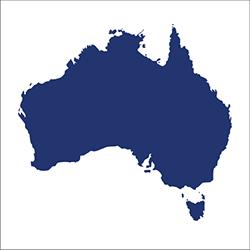
This project was funded by the Australian Government ($775,000). Australian Government funding was provided through the National Water Grid Fund.

The Bureau of Meteorology assessed potential climate change impacts on water resources across Australia.
Project overview
The Bureau of Meteorology assessed potential climate change impacts on water resources. They did this across Australia, and in selected catchments. They used global and regional scale information.
Their report presents trends, and the data and modelling behind them. This will inform the analysis, planning and investment decisions of the National Water Grid Authority (NWGA). This will help the NWGA plan and build for a future Australia that is water secure, climate-resilient and adaptable.
Goals of the assessment
Climate change affects rainfall, streamflow, runoff and water storage. In many parts of Australia, the amount and timing of water availability will be affected by:
- increased time in drought and other extreme events
- changing rainfall patterns.
Understanding how the changing climate is likely to affect Australia’s water resources is important. It will support climate-resilient planning, development and investment decisions.
Knowing where increased water stress may occur is critical for preparing for and adapting to future conditions. This information will help water managers ensure water resources, the environments that depend on them, and water users themselves, can adapt to the changing climate.
The NWGA Science Program commissioned the Bureau of Meteorology to review the likely impacts on water availability of different climate scenarios for 16 regions across Australia. Researchers combined global climate models with regional scale information on:
- likely future water demand
- supply
- impacts on agricultural production.
This information was then used to characterise a range of plausible hydroclimatic scenarios. It also provided insights into how local water availability may be affected.
Outcomes of the assessment
The outcomes of the investigation vary across the 16 regions assessed. Some findings of note are:
- Despite uncertainty to changes in rainfall in northern Australia. Decreases in dry season soil is projected. Increases in dry season demand are expected. As is increases in the duration of drought-like soil moisture conditions.
- In southern Australia, cool season runoff projections range from little change to decreases of over 40%. Wetter scenarios, with an increase in cool season supply, correspond to increases in warm season demand. So, in these wetter scenarios, scarcity may still increase.
- The east coast of Australia is experiencing a decline in critical east coast lows. These lows are the major rainfall pattern for recharging water supplies along the east coast. Filling of major water storages, including Sydney, is likely to become more uncertain.
- In the rangelands, rainfall extremes are likely to be more intense. The rangelands cover much of central Australia.
Decision-makers will use this information to support analysis, planning and investment. This will support a future Australia that is:
• water secure
• climate-resilient
• adaptable.
Key project benefits
Learn more
- Discover our Science Program.
- Find out more about climate change on Climate Change in Australia.

